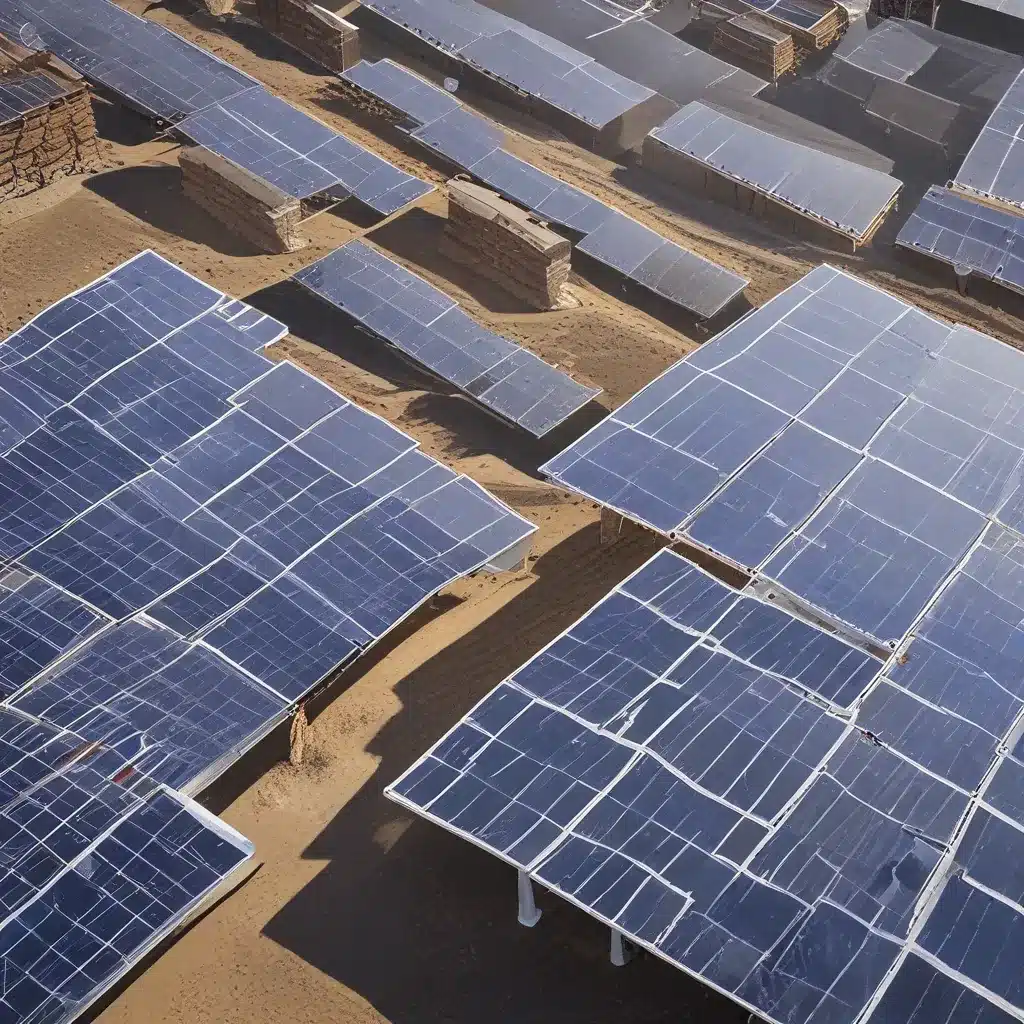
Tapping into the Solar Goldmine: A Beginner’s Guide to Maximizing Your Tax Incentives
As a fellow business owner, I know how thrilling yet daunting the prospect of going solar can be. The idea of harnessing the power of the sun to power your operations is undoubtedly exciting, but deciphering all the complicated tax credits and incentives? That can feel like navigating a veritable minefield.
Well, my friend, prepare to have your mind blown. Because I’m about to let you in on a little secret: tapping into those solar tax credits is actually way easier than you might think. In fact, with the right guidance, you could be saving thousands – even tens of thousands – of dollars on your commercial solar installation.
Unraveling the Inflation Reduction Act: Your Ticket to Solar Savings
Before we dive in, let’s talk about the game-changing Inflation Reduction Act of 2022. This landmark legislation has completely transformed the solar landscape for businesses like yours. As the official ENERGY STAR website explains, the Inflation Reduction Act “empowers Americans to make homes and buildings more energy-efficient by providing federal tax credits and deductions that will help reduce energy costs and demand as we transition to cleaner energy sources.”
In other words, the government is practically handing you a stack of cash to go solar. And we’re not talking chump change here, folks. We’re talking up to 30% of your total installation costs covered by Uncle Sam. That’s a potential savings of thousands – even tens of thousands – of dollars.
Navigating the Solar Tax Credit Landscape
Now, I know what you’re thinking: “Okay, this all sounds great, but how do I actually take advantage of these tax credits?” Well, let me break it down for you.
The first and most well-known incentive is the Solar Investment Tax Credit (ITC). This beauty allows you to claim a 30% tax credit on the total cost of your commercial solar system, including installation and equipment. And the best part? This credit can be carried forward to future tax years if you don’t owe enough in taxes to fully utilize it in the current year.
But wait, there’s more! The Inflation Reduction Act also introduced the 179D Energy Efficient Commercial Buildings Deduction, which can save you up to $565 per square foot on your new construction or major renovation projects. And for those of you with smaller operations, the Rural Energy for America Program (REAP) offers grant funding and loan guarantees specifically for renewable energy and energy efficiency projects in rural areas.
Maximizing Your Savings: A Step-by-Step Guide
Okay, now that you know about the available incentives, let’s talk strategy. The key to truly maximizing your solar tax credits is to approach it with a well-thought-out plan.
First and foremost, conduct a thorough energy audit of your facility. This will help you identify the most significant and cost-effective energy efficiency improvements you can make, allowing you to take full advantage of the tax credits.
Next, start thinking about your timeline. As ENERGY STAR explains, “It may be practical to spread your home energy efficiency improvements over a few years” in order to make the most of the annual credit limits. The same principle applies to commercial projects – strategically planning your upgrades can help you maximize your tax savings.
And speaking of timing, let’s talk about the Inflation Reduction Act’s deadlines. The 30% Solar ITC is set to gradually decrease in the coming years, with the credit dropping to 26% in 2033 and 22% in 2034. So, if you’re considering a solar installation, it’s best to act sooner rather than later to take full advantage of the most generous incentives.
Partnerships and Financing: Unlocking the Secrets to Solar Success
Of course, the upfront costs of a commercial solar system can still be a significant barrier, even with all these tax credits and incentives. But fear not, my friends – there are a few tricks up our sleeve.
One popular option is the power purchase agreement (PPA). With a PPA, you partner with a solar developer who covers the installation and maintenance costs, and you simply agree to purchase the electricity at a fixed, reduced rate. This allows you to enjoy the benefits of solar without the hefty upfront investment.
Another alternative is the solar lease. Similar to a PPA, a solar lease involves a third-party owner who installs the system on your property. You’ll pay a fixed monthly rate for the electricity, but you won’t have to worry about the upfront costs or maintenance.
And let’s not forget about financing options like loans and leases. Solar As Systems Inc. can work with you to find the best financing solution to fit your budget and goals, ensuring you can take full advantage of those solar tax credits.
The Future is Bright: Embracing the Solar Revolution
As a business owner, I know how important it is to stay ahead of the curve and capitalize on every opportunity to reduce costs and boost your bottom line. And let me tell you, going solar is one of the best investments you can make.
Not only will it slash your electricity bills and shield you from the volatile ups and downs of the energy market, but it also positions your business as a leader in sustainability. In today’s eco-conscious landscape, that kind of green cred can be a serious competitive advantage.
So, what are you waiting for? Embrace the solar revolution and start maximizing your commercial solar tax credits today. With the right guidance and a strategic plan, you can unlock a treasure trove of savings and set your business up for long-term success.
Trust me, your future self will thank you.


